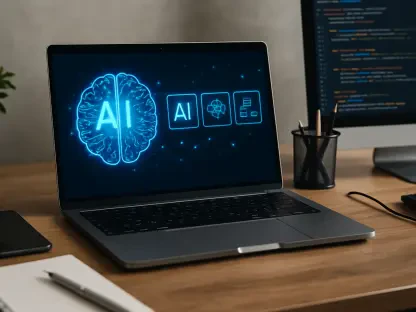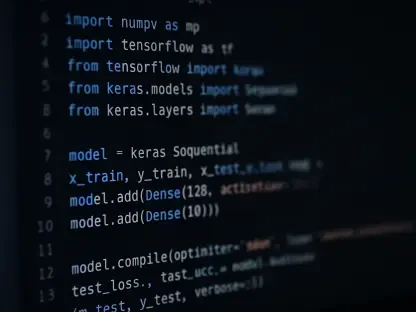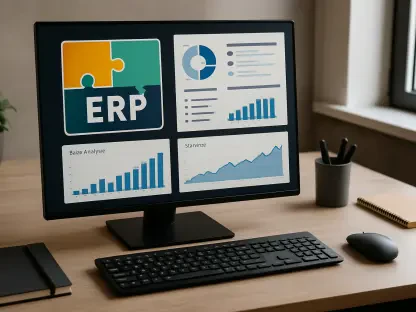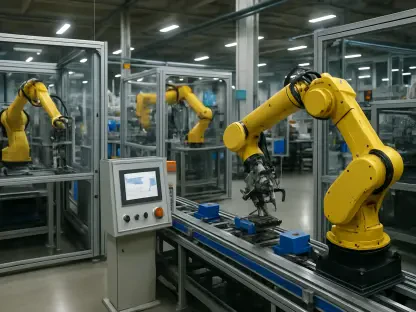The Rise of AI-Driven Productivity Tools
The landscape of workplace productivity is undergoing a profound transformation, with artificial intelligence emerging as a cornerstone for streamlining tasks and redefining workflows across industries. AI tools are no longer niche; they are integral to daily operations, automating repetitive processes and enabling employees to focus on strategic priorities. Microsoft Copilot stands at the forefront of this revolution, serving an expansive base of 100 million Microsoft 365 users and driving innovation in how work is accomplished.
A key factor in Copilot’s prominence is its use of advanced technologies like natural language processing and conversational interfaces, which draw inspiration from widely recognized platforms such as ChatGPT. These capabilities allow users to interact with software in intuitive ways, reducing the learning curve and enhancing accessibility. Microsoft’s strategic integration of these features positions it as a leader in transforming routine business functions into dynamic, user-driven solutions.
In the competitive arena of low-code and no-code development, Microsoft holds a significant edge alongside major players like Google, Salesforce, and ServiceNow. Each of these companies is racing to empower non-technical users with tools that simplify app creation and automation. However, Microsoft’s deep integration with its productivity suite and its focus on AI-driven personalization set Copilot apart as a transformative force in the market, reshaping expectations for workplace technology.
Unveiling Microsoft Copilot’s New Capabilities
Empowering Non-Technical Users with App Builder and Workflows
Microsoft Copilot’s latest features, App Builder and Workflows, are designed to revolutionize the way employees engage with technology by enabling them to craft applications and automate processes through simple conversational prompts. These tools break down traditional barriers, allowing individuals without coding skills to develop functional business solutions. From creating project trackers to designing team dashboards, users can now address specific needs with ease.
What makes these features particularly impactful is their seamless integration with Microsoft 365 data, ensuring that the resulting applications are tailored to individual and organizational contexts. This personalization means that a finance team member can build a budget tracker referencing existing data, while a sales lead can automate follow-up tasks directly within their workflow. Such customization enhances relevance and boosts efficiency across departments.
Accessibility remains a core principle, with app creation likened to everyday tasks like drafting an email or constructing a spreadsheet. This approach builds on Microsoft’s extensive experience with the Power Platform, which has evolved over several years into a robust foundation for low-code development. By embedding these capabilities within Copilot’s familiar interface, Microsoft ensures that app building becomes an intuitive extension of daily work.
Market Impact and Growth Potential
Currently, the Power Platform supports 56 million monthly active users, a testament to the growing appetite for accessible development tools within enterprises. Microsoft envisions scaling this figure dramatically to 500 million builders in the coming years, reflecting an ambitious goal to redefine workplace capabilities. This target underscores the potential for widespread adoption as more employees embrace these tools.
The economic model behind Copilot further fuels its accessibility, with the Microsoft 365 Copilot subscription priced at $30 per month, bundling substantial value without additional costs for these new features. This pricing strategy encourages organizations to integrate AI-driven development into their existing ecosystems, lowering financial barriers and promoting broader usage among diverse teams.
Looking ahead, the expansion of these tools beyond the initial Frontier Program rollout promises to reshape productivity norms. As adoption increases, projections suggest a significant uptick in employee-driven innovation, with customized apps and automated workflows becoming standard in addressing niche business challenges. This trajectory points to a future where technology empowers every worker to contribute to organizational growth.
Challenges in Democratizing App Development
While the democratization of app development through Copilot offers immense potential, it also introduces notable challenges, particularly the risk of “shadow IT.” This phenomenon occurs when employees create unsanctioned applications outside formal IT oversight, potentially leading to security gaps or operational inefficiencies. Managing this proliferation at scale remains a critical concern for enterprises.
Another hurdle lies in user readiness and the resistance to rapid technological shifts. Feedback from some Microsoft 365 users highlights frustration with the pace of AI integration, as frequent updates can disrupt familiar workflows. This sentiment suggests that not all employees are prepared to adopt app-building responsibilities, necessitating careful change management to align with varying comfort levels.
To address these issues, Microsoft has implemented IT admin controls and governance mechanisms aimed at curbing risks while supporting innovation. These solutions enable organizations to monitor and manage employee-created tools, ensuring alignment with security protocols. By striking a balance between empowerment and oversight, such measures aim to foster a controlled environment for app development.
Governance and Security in a Democratized Landscape
Microsoft’s approach to balancing accessibility with security is evident in the administrative tools provided through the Microsoft 365 admin center, which allow IT teams to oversee apps and workflows created by employees. This centralized inventory offers visibility into usage patterns, helping to identify critical tools that may require formal support or restrictions to safeguard organizational data.
Specific policies further enhance governance, such as app ownership transfer protocols that maintain accessibility for 60 days after an employee’s departure. Additionally, widely used tools can be elevated to IT-supported status, ensuring proper maintenance and compliance. These measures address the practical challenges of managing a growing array of user-generated applications in dynamic workplaces.
A clear distinction between internal and external use cases also shapes Microsoft’s security strategy. While internal tools like team dashboards are suitable for employee creation, external-facing systems carry higher risks of data breaches, necessitating professional oversight. This pragmatic boundary underscores the importance of tailored governance to protect sensitive information while encouraging innovation within safer parameters.
The Future of Workplace Roles and Skills
Microsoft envisions a transformative shift where office workers evolve into software builders, with app-building emerging as a fundamental skill comparable to Excel proficiency in previous eras. This redefinition of roles suggests that employees across departments, from marketing to operations, will increasingly leverage technology to solve unique challenges, reshaping job descriptions and expectations.
Broader industry trends reinforce this outlook, as AI-driven productivity and low-code platforms gain traction globally. Competitors and innovators are similarly pushing toward simplified development environments, indicating a collective move to empower non-technical users. Microsoft’s strategic partnership with OpenAI, securing access to cutting-edge advancements through 2032, positions it to maintain a competitive edge in this evolving space.
Potential disruptors, however, warrant consideration, including varying user adoption rates and economic factors influencing technology investments. Competitive innovations could also challenge market dynamics, requiring continuous adaptation. Despite these uncertainties, growth areas abound, particularly in training and cultural integration, which will be pivotal in realizing the full potential of democratized app development.
Redefining Productivity Through AI
Reflecting on the transformative journey of Microsoft Copilot, it becomes clear that its ability to turn non-technical workers into app builders marks a significant milestone in workplace technology. The integration of conversational AI within the Microsoft 365 ecosystem empowers millions to create tailored solutions, fundamentally altering productivity paradigms. Challenges such as shadow IT and user acceptance persist, yet governance mechanisms provide a framework to navigate these hurdles.
Looking back, the balance between innovation and oversight emerges as a defining theme, shaping how organizations adopt these tools. Moving forward, a focus on comprehensive training programs and fostering a culture of technological adaptability stands out as critical next steps. By equipping employees with the skills to embrace app-building and ensuring robust support structures, enterprises can maximize the impact of this democratization. Microsoft’s vision of reaching 500 million builders serves as a powerful reminder of the untapped potential in reimagining workplace capabilities, pointing toward a future rich with opportunity for those ready to adapt.









